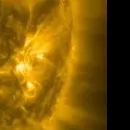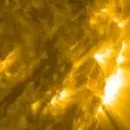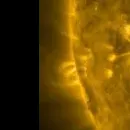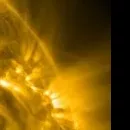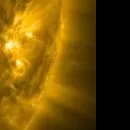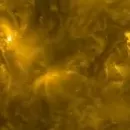Real-Time Sun Map with Active Sunspots








Explore the Sun in real time using our interactive map, which displays the solar disk across multiple wavelengths — including visible light, ultraviolet, and magnetograms. Track active sunspot regions visually as they evolve on the surface of the Sun.
The map allows you to switch between different spectral views to observe magnetic activity, coronal structure, and sunspot positions in detail.
Below the map, you'll find a live list of all currently visible sunspots. Each entry includes the NOAA sunspot number, magnetic classification, flare risk, and physical properties such as area and spot count.
- Interactive Solar Map: View the Sun in different wavelengths and follow active regions in real time
- Sunspot Highlights: All visible sunspot regions are marked on the map
- Detailed Sunspot List: Includes magnetic class, size (MSH), flare probabilities, and more
Both the map and the list are updated continuously using the latest observations from solar observatories.
Current Sunspot Regions
Below is a list of all sunspot regions currently visible on the solar disk. Each sunspot is an area of intense magnetic activity, often associated with solar flares and coronal mass ejections.
Every entry includes the NOAA active region number, magnetic classification, estimated area in millionths of the solar hemisphere (MSH), number of distinct spots, and flare probabilities. The list is continuously updated with the latest data from solar observatories.
4325
Sunspot Region
4336
Sunspot Region
4333
Sunspot Region
4324
Sunspot Region
4323
Sunspot Region
4334
Sunspot Region
Acknowledgements
We gratefully thank the teams behind the Solar Dynamics Observatory (SDO), including the HMI, AIA, and EVE instrument teams, for their continuous work in solar monitoring.
We also thank the National Aeronautics and Space Administration (NASA), the Goddard Space Flight Center (GSFC), and the National Oceanic and Atmospheric Administration (NOAA) for their contributions to solar science and public data access.
Additional event data is provided by NASA’s DONKI (Database of Notifications, Knowledge, Information), which offers alerts and detailed records of solar flares, CMEs, and geomagnetic storms.

